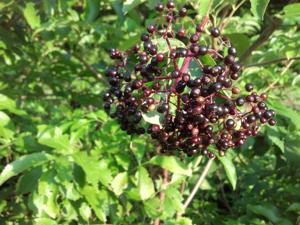
The black elderberry, scientifically known as Sambucus nigra canadensis, is gaining recognition for its ecological importance and nutritional benefits. This attractive shrub thrives in a variety of conditions, making it a valuable addition to landscapes and natural habitats alike.
Characteristics and Habitat
Black elderberry typically grows between 4 to 12 feet tall and spreads widely, adapting well to disturbed sites such as woodland edges and roadside ditches. It is often found in areas with full to partial sunlight, showcasing its resilience in both managed and unmanaged spaces. Initially classified as a distinct species, it is now recognized as a subspecies of the European elderberry, Sambucus nigra nigra.
The shrub features light grayish-brown bark that darkens with age and has unique lenticels that facilitate gas exchange. Its compound leaves, which can reach lengths of up to 12 inches, are lanceolate in shape and serrated along the edges. The flowers bloom in large, attractive clusters during early summer, emitting a sweet fragrance that attracts various pollinators.
Ecological Significance
Black elderberry plays a critical role in supporting native wildlife. Its flowers produce pollen, attracting bees, beetles, and flies, while the soft stems provide nesting opportunities for carpenter bees. The foliage, although less appealing to mammals due to its toxic properties, serves as a food source for numerous insect larvae.
The most significant contribution of black elderberry to the ecosystem is its fruit, which ripens in late summer. Both small and large birds, including cedar waxwings and turkeys, eagerly consume the ripe berries. This plant has long been valued by Indigenous peoples, who have harvested its berries for food and utilized its stems for tools and medicinal purposes.
While elderberries are safe for human consumption, they must be processed properly to remove toxins present in the leaves, stems, and roots. Cooking the ripe berries breaks down these toxins, allowing them to be transformed into jams, jellies, syrups, and other culinary delights. Despite their perishable nature, dried elderberry products have surged in popularity, with many consumers seeking their potential health benefits.
Research into the health advantages of elderberry is expanding, though further studies are necessary to substantiate these claims. As awareness grows about the ecological and nutritional value of the black elderberry, this humble shrub continues to demonstrate its significance in both gardens and natural settings across Illinois and beyond.






